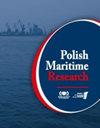An Improved Dynamic Surface Sliding Mode Method for Autonomous Cooperative Formation Control of Underactuated USVS with Complex Marine Environment Disturbances
IF 2
3区 工程技术
Q2 ENGINEERING, MARINE
引用次数: 4
Abstract
Abstract In this paper, a novel dynamic surface sliding mode control (DSSMC) method, combined with a lateral velocity tracking differentiator (LVTD), is proposed for the cooperative formation control of underactuated unmanned surface vehicles (USVs) exposed to complex marine environment disturbances. Firstly, in view of the kinematic and dynamic models of USVs and the design idea of a virtual control law in a backstepping approach, the trajectory tracking control problem of USVs’ cooperative formation is transformed into a stabilisation problem of the virtual control law of longitudinal and lateral velocities. Then, aiming at the problem of differential explosion caused by repeated derivation in the process of backstepping design, the first-order low-pass filter about the virtual longitudinal velocity and intermediate state quantity of position is constructed to replace differential calculations during the design of the control law, respectively. In order to reduce the steady-state error when stabilising the virtual lateral velocity control law, the integral term is introduced into the design of the sliding mode surface with a lateral velocity error, and then the second-order sliding mode surface with an integral is structured. In addition, due to the problem of controller oscillation and the role of the tracking differentiator (TD) in active disturbance rejection control (ADRC), the LVTD is designed to smooth the state quantity of lateral velocity. Subsequently, based on the dynamic model of USV under complex marine environment disturbances, the nonlinear disturbance observer is designed to observe the disturbances and compensate the control law. Finally, the whole cooperative formation system is proved to be uniformly and ultimately bounded, according to the Lyapunov stability theory, and the stability and validity of the method is also verified by the simulation results.复杂海洋环境扰动下欠驱动usv自主协同编队控制的改进动态表面滑模方法
提出了一种结合横向速度跟踪微分器(LVTD)的新型动态表面滑模控制(DSSMC)方法,用于欠驱动无人水面航行器(usv)在复杂海洋环境扰动下的协同编队控制。首先,根据usv的运动学和动力学模型以及退步法虚拟控制律的设计思想,将usv协同编队的轨迹跟踪控制问题转化为纵向和横向速度虚拟控制律的稳定问题;然后,针对反推设计过程中由于反复求导导致的差分爆炸问题,分别构建了关于虚拟纵向速度和位置中间状态量的一阶低通滤波器来代替控制律设计中的微分计算。为了减小虚拟横向速度控制律稳定化时的稳态误差,将积分项引入到具有横向速度误差的滑模曲面设计中,构造了具有积分的二阶滑模曲面。此外,针对控制器振荡问题和跟踪微分器在自抗扰控制中的作用,设计LVTD平滑横向速度的状态量。随后,基于复杂海洋环境扰动下无人潜航器的动力学模型,设计了非线性扰动观测器来观测扰动并补偿控制律。最后,根据Lyapunov稳定性理论证明了整个协同编队系统是一致且最终有界的,仿真结果也验证了该方法的稳定性和有效性。
本文章由计算机程序翻译,如有差异,请以英文原文为准。
求助全文
约1分钟内获得全文
求助全文
来源期刊

Polish Maritime Research
工程技术-工程:海洋
CiteScore
3.70
自引率
45.00%
发文量
20
审稿时长
>12 weeks
期刊介绍:
The scope of the journal covers selected issues related to all phases of product lifecycle and corresponding technologies for offshore floating and fixed structures and their components.
All researchers are invited to submit their original papers for peer review and publications related to methods of the design; production and manufacturing; maintenance and operational processes of such technical items as:
all types of vessels and their equipment,
fixed and floating offshore units and their components,
autonomous underwater vehicle (AUV) and remotely operated vehicle (ROV).
We welcome submissions from these fields in the following technical topics:
ship hydrodynamics: buoyancy and stability; ship resistance and propulsion, etc.,
structural integrity of ship and offshore unit structures: materials; welding; fatigue and fracture, etc.,
marine equipment: ship and offshore unit power plants: overboarding equipment; etc.
 求助内容:
求助内容: 应助结果提醒方式:
应助结果提醒方式:


